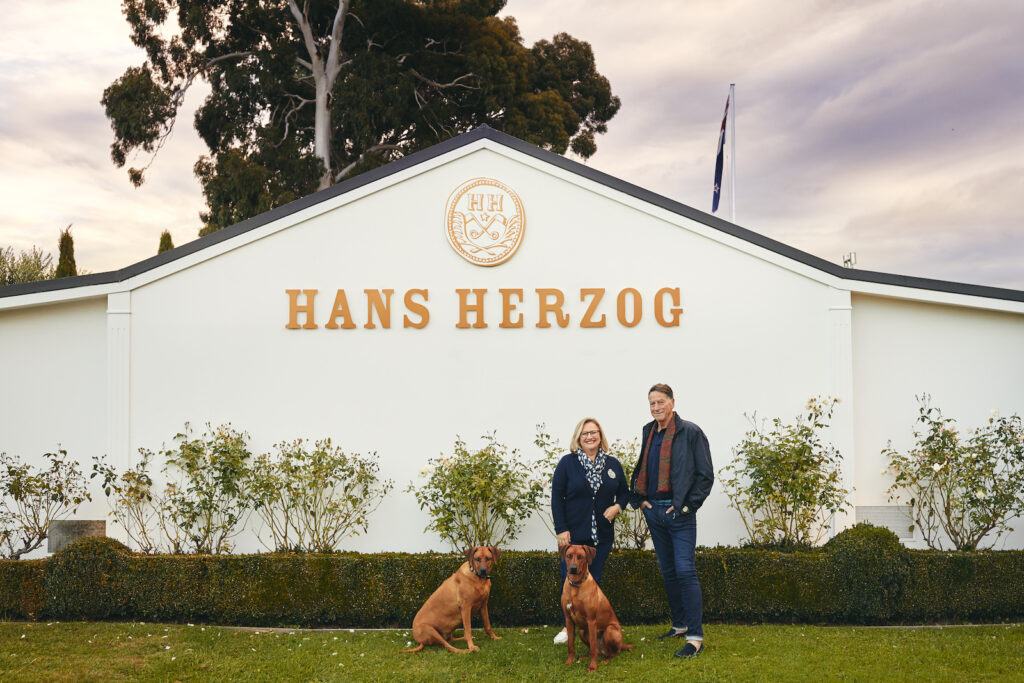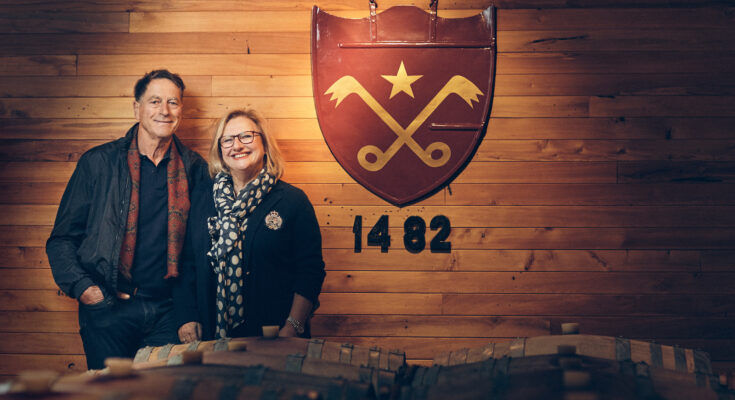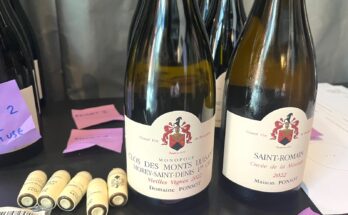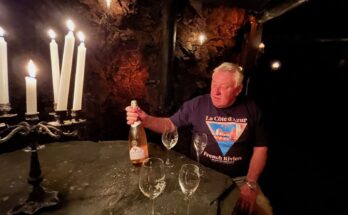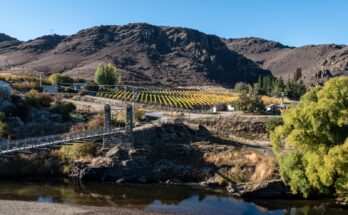In my pursuit of the ‘best’ of New Zealand wines, there are a few names that appear again and again in conversations. Today I’m in Marlborough to talk to Therese and Hans Herzog – the pair behind one of those labels with a certain aura and reputation for excellence. I start off sitting in the cooling shade of the terreace, with Therese Herzog, and Maria from Marketing.
Hans and Therese came out to New Zealand in ’94. Hans was always a bit of a revolutionary and someone wanted to explore the boundaries. In Switzerland his family had grown wine since the 16th century, on the family farm. But because it was not only vineyard, but cattle, orchards and everything, Hans had been reluctant to follow in their footsteps. His love, from childhood, was in the vineyard. He studied agriculture… but also viticulture, and then oenology and ten years later he got his Masters in Oenology.
Somewhere along the way Therese meets Hans. He was working as the Chief Winemaker of a wine merchant in Zurich. They would buy bulk in from everywhere in Europe and then Hans would finish the wine and bottle it and sell it. They did also have their own vineyards, so Hans gained confidence in doing all kinds of different varieties and wines. Then after about ten years he tells Therese “I have to go back into the vineyard, because it’s quite depressing to only see the must, and have nothing to influence. The most important part I miss – and that’s growing great grapes”.
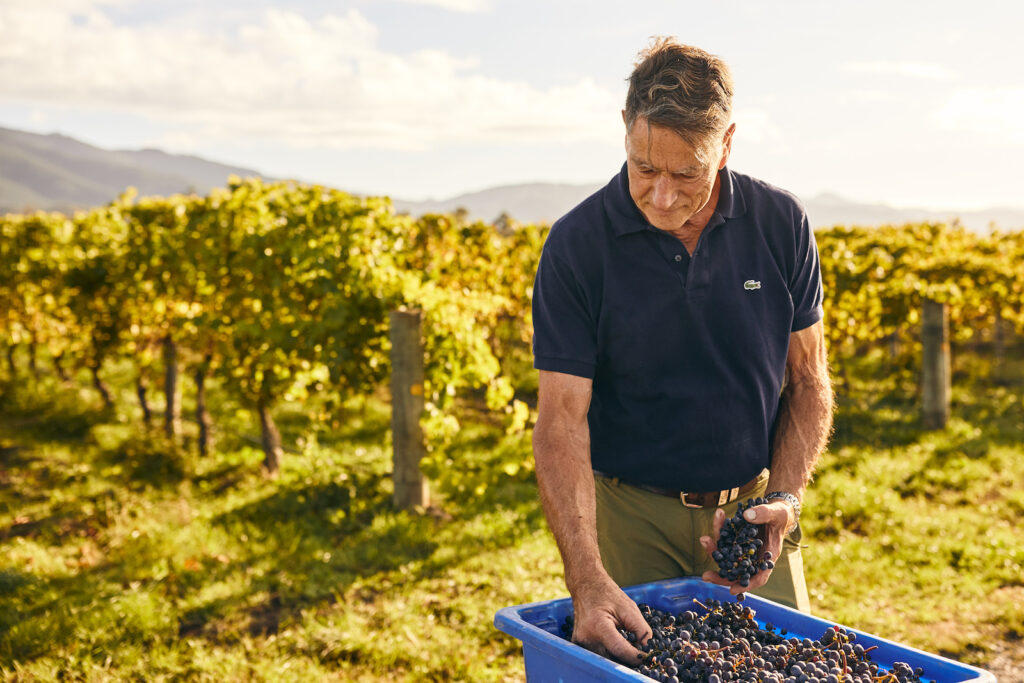
Therese continues with their story: “So we started in the early ‘80s with a vineyard in the Zurich wine country, and in the end we had about five plots. Land is very precious, rare and costly in Switzerland. Hans didn’t want to grow Muller Thurgau, so he planted a lot of forbidden grape varieties like Chardonnay and sauvignon Blanc. Things which weren’t allowed – because it’s like in France – you are allowed to do certain grape varieties. And of course, because it is the main grape variety in Switzerland – Pinot Noir.
It started as a garage winery really, from very humble beginnings. But then we leased some buildings and we had to take over a restaurant – and that became a Michelin-star. Just because we were wine lovers and we want to just have fresh food. It was not our intention to go down that line, but that happened! We were young and we did things totally differently from all the others, but it did very well and it was highly successful. We made our labels with an artist – not like everyone has the hill and the vineyard…
Maybe it helped because my job was as a Marketing Manager. Hans was happy and kept very busy, but it happened that we came to New Zealand to visit my brother who had emigrated in 1980. We came through Marlborough and he wondered why it wasn’t a wine region? Because it was the best climate – very dry and sunny. And he would always talk about Marlborough, and come here every four or five years to visit.
In Switzerland it was really hard – to get things to physiological ripeness. You always had to compromise and our yields were so low that we made hardly any profit. Hans is an Artisan – he wants to make great wines, and he doesn’t really think too much about the consequences. He had his complaints – like “this is an awful climate – why don’t we go and buy something in New Zealand as a second vineyard – I need some motivation!” and then, in the early ‘90s he became more insistent, and there’s nothing I can really do to stop it!”
Hans had decided that he would really like to have something in Marlborough, by the banks of the Wairau River using the alluvial, gravelly soils. He wanted to do all the late-ripening varieties that he couldn’t do. Many people are not aware but at the beginning of the ‘90s some vineyards in marlborough had Cabernet Sauvignon planted, including Cloudy Bay. Nothing was available to buy as they looked, but the Real Estate Agent called them when something came up in the late summer of ’94, and like so many places in Marlborough at the time, it was an orchard. And like much of the agricultural land, all these orchards are being transformed into vineyards because it will bring in so much more money– this isn’t a motivation for the Herzogs, of course. They regard themselves as being really lucky that the place was not officially on the market, as it’s in a real hotspot. Being next to the river and in the path of the northwesterly wind, brings up the heat in their vineyard by about two degrees compared to next door.
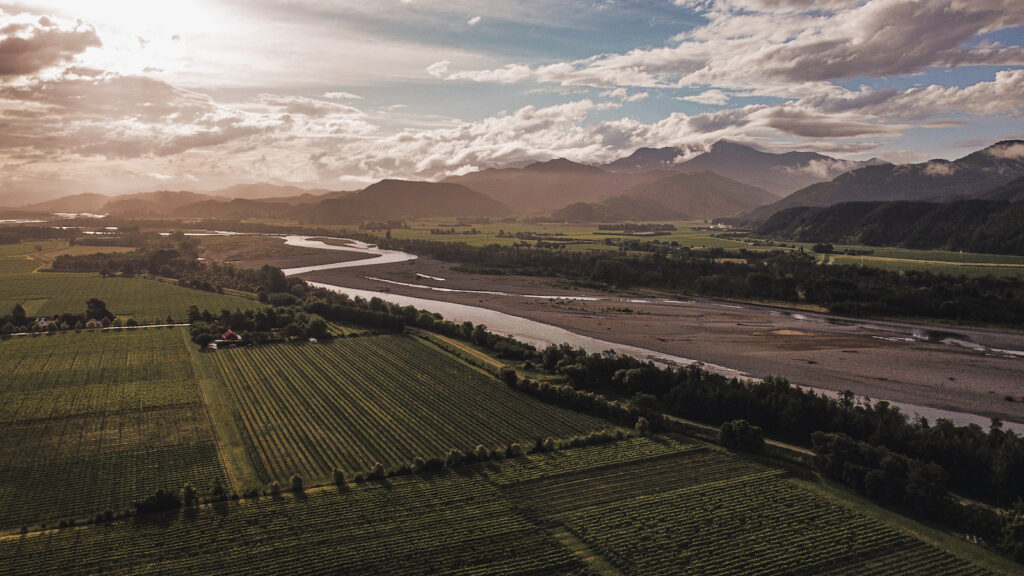
Therese explains more about the specifics of the vineyard – “So in the growing season we have that amazing additional heat, but also in Spring – when we can have a cold snap – the river has much more water and that helps to protect us from frosts. It is an amazing site. We don’t have that much topsoil, but we have different islands of sediments – from stony, gravelly to sandy and sand/clay. The whole vineyard is a patchwork of different varieties, and since we planted in ’96, it is still an every-changing thing. Because, with Hans, there is always something new. For example when we did Pinot Gris in the ‘90s, and nobody was really doing it, so we were one of the first. And it is so common now. The way the vineyard is, is just Hans. It’s not something that you would do if you were doing it commercially. It’s complicated – growing that many grape varieties and making wine so well. It’s a lot of work, but that doesn’t mean anything to Hans – he lives that 24/7.
Every day he’s out there, on the tractor, in the vineyard, looking after the grapes. He says “I can only do these things because at the end we can pick these amazing grapes”. We are looking a new assistant for Hans, but we need a viticulturist – who can drive the tractor and are willing to work with the plants. I think in the New World, viticulture is often just having a gang to observe – often because of the size and the return on investment. One of the most expensive parts of the business is labour, and the vineyard needs a lot of labour if you want to do things right.
At some stage in the last thirty years, all the land around us has been offered to us at a good price, so we could have grown very much and it is tempting when you have a great name. I said many times “we should have a second label where we can actually make money”. But Hans says “No, I can do that much, how I do it”
We try a couple of the white wines – Chardonnay, Mistral and Pinot Gris.
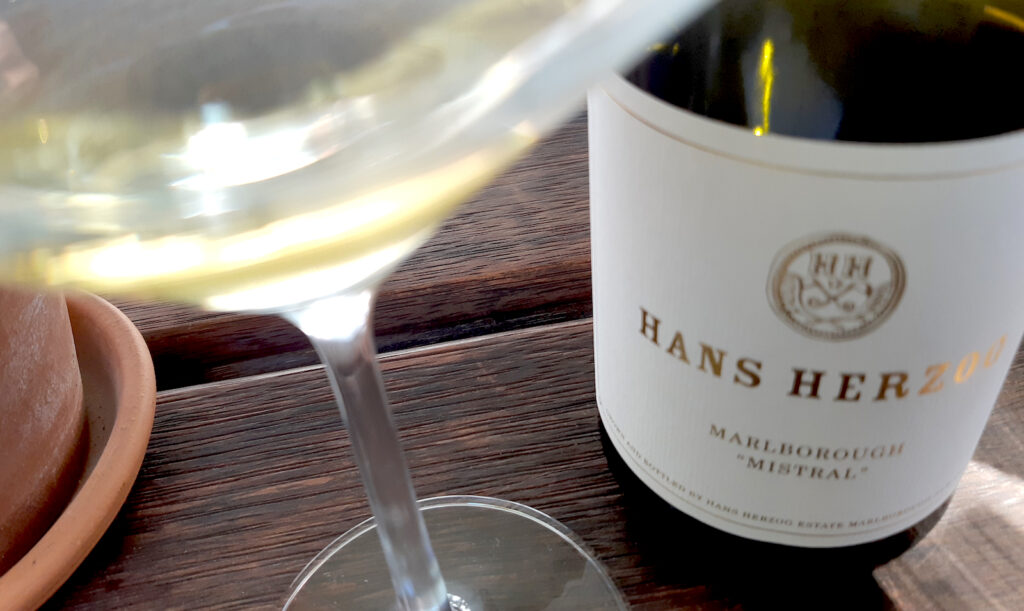
Therese tells me: “Everything is hand-picked in the vineyard, but also totally natural winemaking. But we can come to that later. Our Pinot Gris is only partially in barrel, and with our white wines we always do skin contact. We only pick great grapes, because that’s really where our work goes. You need to have healthy and clean grapes, otherwise you might get really unlikeable flavours. We all know with ‘natural wines’ how many times this can happen.
Our Chardonnay is always 18 months in puncheons, but we aren’t looking for oak when we barrel age, it’s really for maturation, to have some oxygen going on. So we have lightly toasted barrels, or we use them for a longer time. With the Chardonnay, and our top Sauvignon Blanc, there is always a part that is new, but it is not about the oak.
We have nine wines that we are able to export – Pinot Gris, Chardonnay, Viognier, Sauvignon Blanc, Pinot Noir, Montepulciano. We are very strong in on trade. We do the crazy things as well – we never have enough of the more limited wines. The limited wines are only for New Zealand and Australia.
Mistral is a percentage of Viognier, Marsanne and Rousanne. Michel Bettane, who was, at the time, the Editor of the La Revue du vin de France came to New Zealand and tried our Viognier. He said “surely this is acidified because it can’t be that have such a freshness in the wine” – and Hans said “ I never add anything to my wines, except small amounts of sulphur so it can travel. I do not add or take anything!”
Marlborough is a great wine region – known of course for the Sauvignon Blanc because it’s a great success. But, for example, at the London Wine Fair in the last year, Rebecca Gibb MW chose the Herzog Montepulciano to talk about in a virtual Masterclass about different grape varieties in New Zealand. People ask the why they came to Marlborough, and their answer is just that they can make such good wine here compared to Switzerland. Therese is quick to add – “We could stay at home and do what we can do – within the limits – or be brave and break the boundaries. This was all unknown but we never looked back”.
WineFolio: Have you noticed any trends?
Therese Herzog: Yes, there is a trend back to Chardonnay. That becomes fashion again. We love chardonnay – for me this is still the queen for the white wines. A beautiful Chardonnay – dry, but with some body – it’s just amazing.
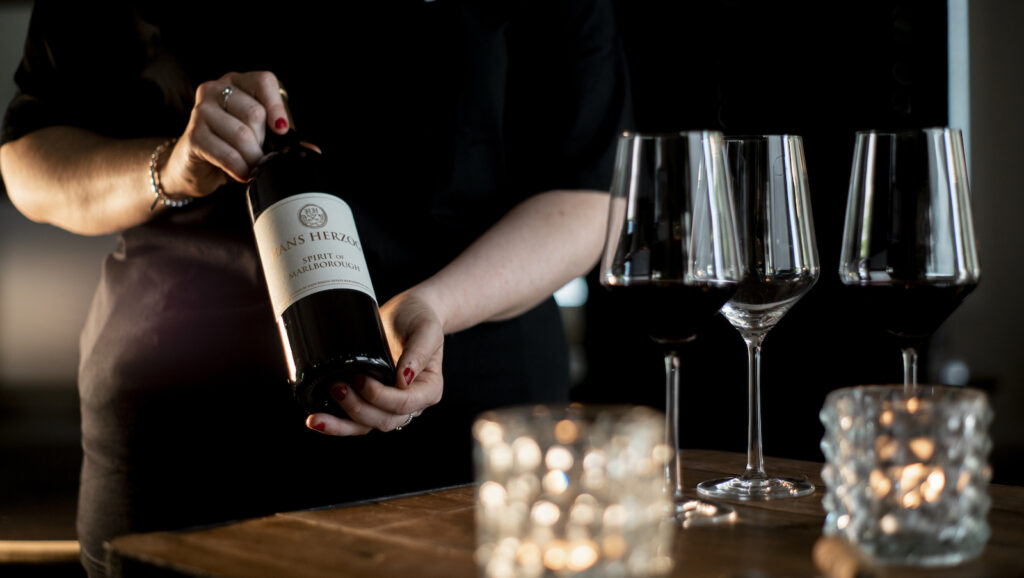
And another trend towards more natural wines. Well, I think if we are dealing with younger people – the new generation, who have other values in life. But natural wines doesn’t just mean a laissez-faire – just doing nothing? It has to be controlled, and checked. It is work. It is not just letting them go. There are some natural wines that have a reputation of being funky, and some people like that and say ‘well this is how it should be’. No. It should never be like that. A wine should be an enjoyment to drink. If it is not, natural, or not-natural, then why would you do it?
Hans is an artist, but he has a scientific background. You can learn something without going to university. You have amazing chefs who haven’t learnt ‘the trade’. They learnt from other people, or are self-trained. I think you can learn a lot about things that are very specific, just by studying them. Sometimes people come at vintage and ask Hans ‘why do you do this that way?’ and Hans tells them “I can’t say, it’s just from experience” For example, after 50+ vintages – when he has the must he just knows how much skin contact he wants to do. There is not a recipe – well, every vintage is different anyway – with different pH, different flavours.
WF: So it’s not just embracing that idea of ‘vintage variation’, it is understanding it as well?
TH: Exactly. Everything over 32 degrees is not helping the grapes. The vine shuts down, as it has to protect itself. There’s no physiological ripening happening any more, and that affects the wine later on. Many people think “Great – hot – now we can make wine in England”. Well, hot is not good. What you want is around 25 degrees ideally. Our temperature in growing degree days has gone up, in Marlborough, despite our maritime climate. But so far, as long as we don’t have too many of these really hot days, then it is all OK. Recently, during vintage of 2017 for example, these rain storms come during vintage. If you have a high yield environment with lots of big bunches, then these can start to rot. We had our Montepulciano out and there was a weekend of heavy rain, and people said ‘oh, you have to get it in’, but actually they are quite healthy and, if anything, this washes away all the dust just before harvest.
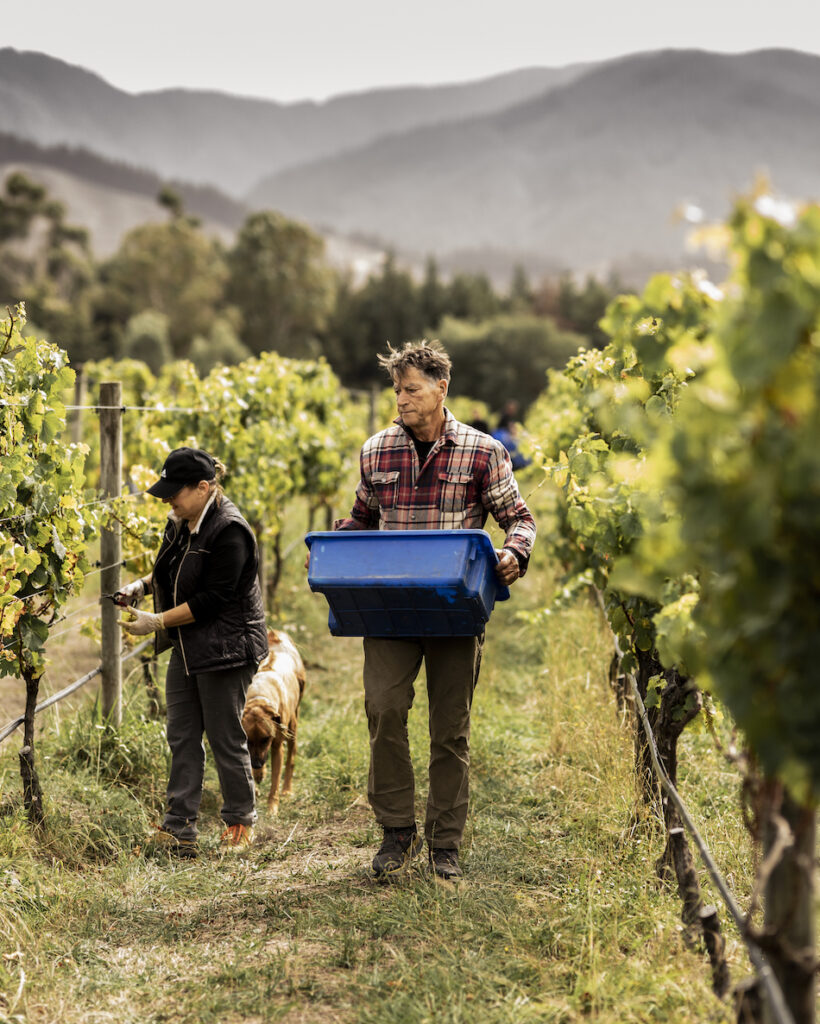
It doesn’t really do anything because the berries are developed, and it dries quickly.
This year year we could have done a trockenbeerenauslese with the dry weather we had – we pick our riesling as a dry wine – but we don’t know that in advance! That’s Mother Nature. It’s not fun though to get hotter and hotter.
We wander off and find Hans – working solo in the winery, the assistant having left recently.
Therese explains further – about the hands-on approach: “When we pick our grapes – ten minutes later they are with Hans. Mostly de-stemmed – maybe with our Chardonnay we’ll do a parcel that are whole-bunch, but mostly everything is de-stemmed and crushed. Half-crushed, half whole berries, then always left…depending on vintage and grape variety… one to to a few days to cold soak (or pre-ferment maceration)… then pressed. Whites are fermented in 500 litre oak puncheons. The reds are in open fermenters for the whole time of fermentation. Then after fermentation they are held for a time on post-ferment maceration because then you have other flavours and aromas. We have started to prefer that they go into 500 litre puncheons as well. There is just less oak contact, and oak is not what we are looking for. You should never have an ‘oaky’ wine – it just isn’t right.”
We try a 2020 Chardonnay, still on the fine lees. A good year, the wine is delicious, finely balanced with a lovely spice. Beautiful structure, but ready to drink right now, but even after it is bottled, it will stay a year in the bottle before release.
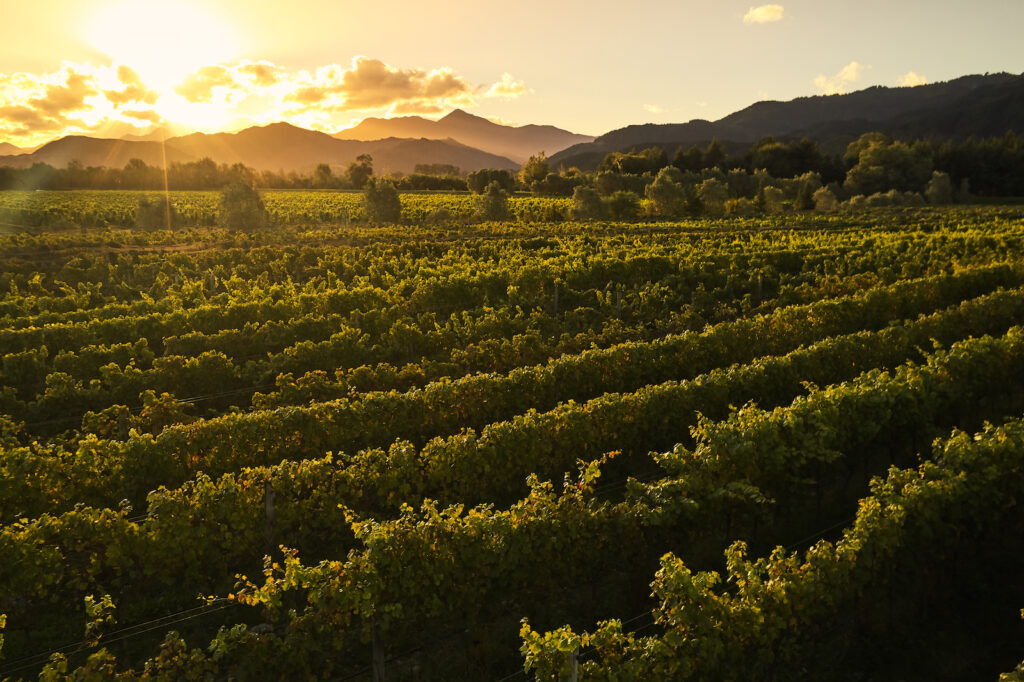
The Pinot Noir is concentrated by the lowest yield naturally…. Amongst their more unusual varieties is St. Laurent – an Austrian grape variety that is one of the parents of Zweigelt that was created by Dr Zweigelt in 1923. I hadn’t had their St Laurent before – there are so many grape varieties that are interesting. We try a Zweigelt 2019 from the barrel – one of my favourites, and one of Austria’s biggest varieties. This is due to come out of the barrel soon. It’s a generous wine, but with great ageing potential – could easily go twenty years, which is a long time for a New World wine. A nice acidity and (when grown well) this thick-skinned varietal produces excellent, fine tannins.
Finally, a wine I have never tried before – not Herzog’s, not anyone’s.. a Saperavi, from 2019. One of the oldest grape varieties that exists – from the birthplace of wine in Georgia. A red-fleshed grape variety that has in the past had a repuation for wines so thick and tannic that you could almost chew them! Here it is in the amphora and then in barrel. A blockbuster of a wine – just lovely. Therese mentions “It is almost humbling for us, to have such an old grape variety in the vineyard. Hans said to me – the leaves are so different, and even the berries are different – like olives!”
